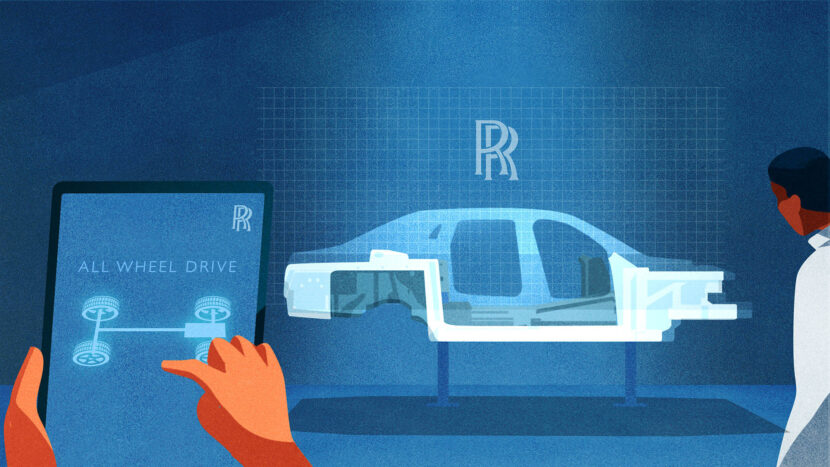Rolls-Royce is currently finishing the final details on its upcoming Ghost model. After 10 years in production for the first generation, the new version is bound to come out next month. To mark the occasion and introduce us to the features the car will come with, the PR people started a campaign of animated videos, to put us up to speed with everything. Now, the time has come to check out the last one of the series, where we’re bound to gain some insight into how the Brits create that ‘serenity’ feel inside their cars.
For the new generation Ghost, Rolls-Royce sat down with its customers and asked them about their habits, likes and dislikes as well as what made them buy a Ghost in the first place. Apparently, most of them really enjoy the near-silent ride of the Ghost and the cocooning effect you get while inside. Therefore, in creating new Ghost, the marque’s team of acoustic specialists were obsessively focused on this highly complicated engineering task.
To achieve a sense of absolute serenity, the acoustic team began by adapting the marque’s proprietary aluminum spaceframe architecture, which itself offers benefits owing to the metal’s higher acoustic impedance compared with steel and its construction of complex forms rather than flat, resonant surfaces. A double-skinned bulkhead section was selected to insulate the cabin from the 6.75-litre V12 engine and cavities in the roof, boot and floor were created to fill with more than 100kg of sound-absorbing materials.
Additionally, double-glazed windows with a clear composite center sheet were used as well as tires lined with lightweight acoustic insulation foam. Once the sound stage was created, every component was obsessively interrogated for its acoustic properties. Those that produced unacceptable levels of noise were discarded and completely redesigned. Even the inside of the air conditioning ducts were smoothed to better insulate clients from intrusive noises.
However, upon early testing the acoustic team discovered that removing all noise was disorientating. Their solution was to create a ‘whisper’ – a soft undertone that clients experienced as a single, subtle note. To achieve this, each component had to be tuned to a specific resonant frequency. This task included the creation of acoustically tuned damping units for the seat frames, as well as a suite of ports between the cabin and the large 500-litre boot to ensure the low frequency it generated was consistent with new Ghost’s ‘note’.
The marque’s experts named this process the Formula for Serenity. Following its creation, these specialists presented the acoustic advances they had made, showcasing how these remarkable developments would serve the demands of new Ghost clients. Rolls-Royce has elected to share elements of these internal briefings to demonstrate the engineering substance that underpins the new generation.







































































